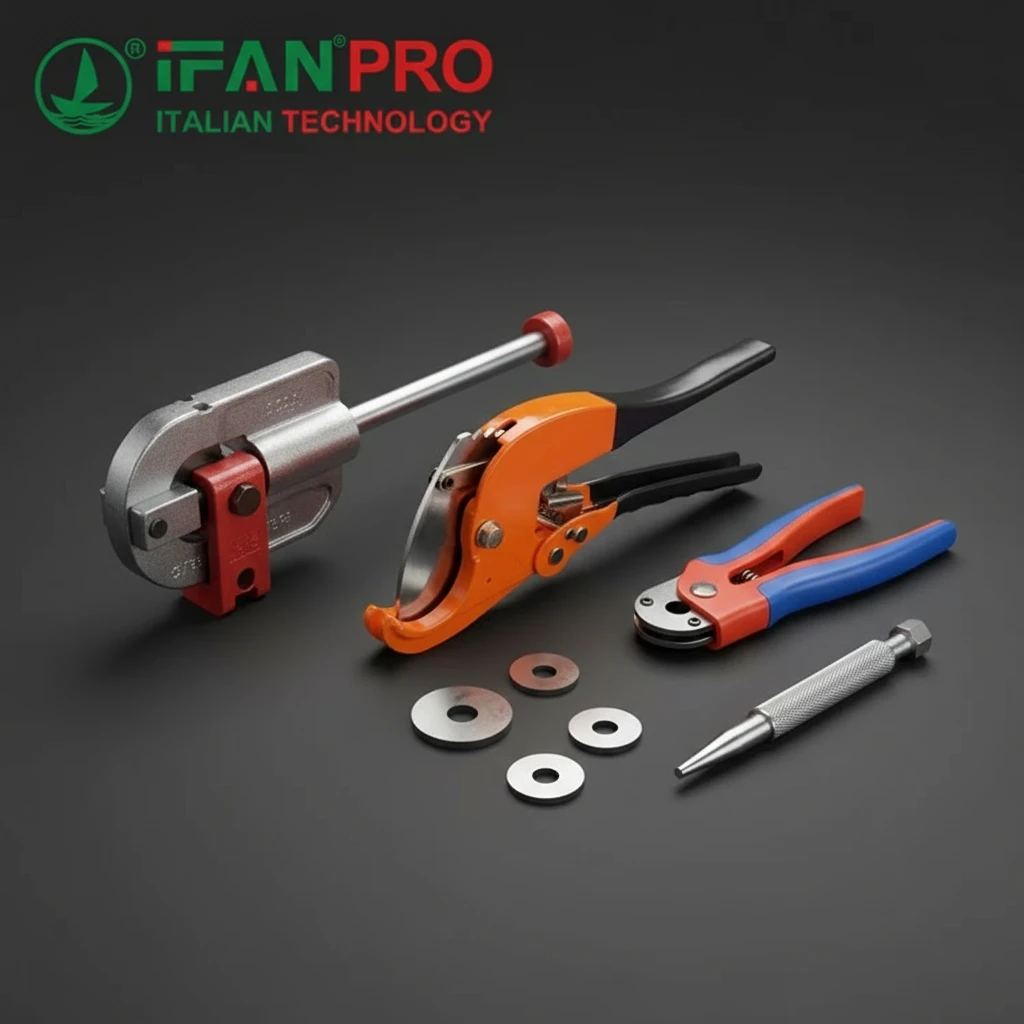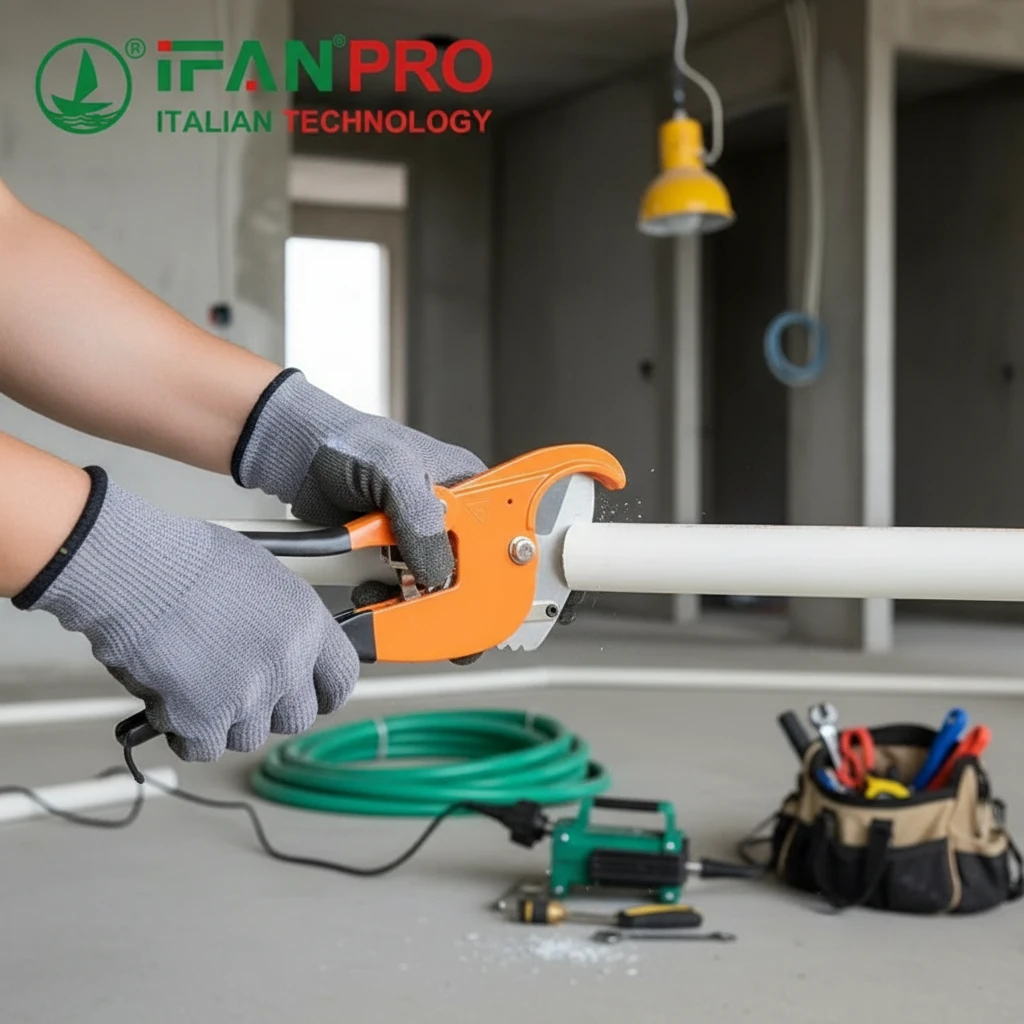I recall a client asking if they could use leftover PPR water pipes for a gas line project. I immediately advised against it due to significant safety risks.
PPR pipes are fundamentally unsuitable for gas lines because their material properties cannot safely contain gas, leading to potential permeability, brittleness, and fire hazards. International building codes and gas distribution standards explicitly prohibit their use for fuel gases, mandating alternative materials like polyethylene or specific metals for such critical applications.
Understanding why PPR is wrong for gas can prevent dangerous accidents. Let’s examine the specific reasons.
What material properties make PPR unsuitable for gas line applications?
Using the wrong pipe for gas can be catastrophic. I’ve seen projects halted for this very reason.
PPR is unsuitable because its polymer structure can allow small gas molecules to permeate through the pipe walls, it lacks sufficient resistance to rapid crack propagation, and it has a low melting point, creating a severe fire hazard. These properties are critical for safely transporting combustible gases under pressure.
The material properties that make PPR excellent for cold and hot water distribution are the same ones that make it dangerous for gas applications. Let’s explore these limitations in detail.
Permeability to Gas Molecules
The molecular structure of PPR (Polypropylene Random Copolymer) is not designed to contain small, volatile gas molecules effectively. Over time, gases like natural gas or propane can permeate through the pipe walls. This is less of an issue with water, as water molecules are less likely to permeate through the PPR material in a way that would cause a safety hazard. For gas, however, even slow permeation can lead to a dangerous accumulation of combustible gas in enclosed spaces, such as inside walls or under floors, creating an explosion risk .
Inadequate Resistance to Rapid Crack Propagation
PPR pipes can be susceptible to brittle fracture under certain conditions, particularly at lower temperatures or when subjected to impact. In gas service, a crack that starts in a pipe can propagate rapidly along its length, leading to a large and immediate release of gas. This phenomenon, known as Rapid Crack Propagation (RCP), is a critical factor in gas pipe material selection. Materials certified for gas, like polyethylene (PE), are specially formulated to resist this type of failure, ensuring that a localized damage incident does not turn into a catastrophic pipe rupture .
Thermal Limitations and Fire Hazards
PPR pipes have a relatively low melting point compared to metals. While they handle hot water well, exposure to open flame or extreme heat can cause them to melt and decompose quickly. In a fire situation, a PPR gas line would fail rapidly, potentially releasing more gas and feeding the fire. Furthermore, the search results indicate that the presence of metal components in some PPR fittings (e.g., copper) can also be a concern, as the differing thermal expansion between plastic and metal might introduce weaknesses over time, especially under thermal cycling .
Which international standards prohibit PPR pipes in gas distribution systems?
Ignoring standards is a recipe for disaster. I always check relevant codes before specifying any material.
International standards like ISO 11299 for gas network renovation and various building codes specifically address materials for gas piping. These standards approve materials like polyethylene and corrugated stainless steel for gas systems, and their scope and provisions effectively exclude generic PPR pipes, which do not meet the stringent performance requirements for fuel gas transportation.

Adherence to recognized standards is not a suggestion; it’s a mandatory safety requirement. These codes exist based on extensive research and historical failure data.
ISO Standards for Gas Systems
The ISO 11299 series outlines the requirements for plastics piping systems used in the renovation of underground gas supply networks. This standard explicitly applies to manufactured pipes and fittings intended for this specific purpose. The fact that PPR is not mentioned within the scope of such key international standards for gas distribution indicates that it is not recognized as a suitable material for this application. These standards instead focus on materials like polyethylene, which have a long-proven track record in gas distribution .
National and Regional Building Codes
Building codes have clear amendments regarding acceptable gas piping materials. For instance, the municipal code of Westminster, California, in its amendments to fuel piping material, states that “Approved Polyethylene or other pipe material approved for underground installation shall be used in exterior buried piping systems” . Similarly, US federal regulations for gasoline fuel systems on vessels mandate the use of materials like “seamless drawn annealed copper pipe or tubing, nickel copper, or copper nickel pipe or tubing” . These codes do not list PPR as an approved material for fuel gas.
Certification Standards for Alternative Materials
Standards such as CSA ANSI LC 1 apply to corrugated stainless steel tubing (CSST) for gas piping in residential, commercial, or industrial buildings . The existence of dedicated, comprehensive standards for specific materials like CSST and polyethylene for gas applications further underscores that PPR is not covered or approved under these frameworks. Manufacturers seeking certification for gas piping must adhere to these specific standards, which PPR cannot satisfy.
What safety risks occur when using PPR pipes for gas transportation?
I’ve heard of contractors considering PPR for gas to save costs, but the risks far outweigh any savings.
The primary safety risks include significant gas leakage through permeation or pipe failure, leading to fire and explosion hazards. PPR’s poor resistance to impact and external damage can result in ruptures, and its low melting point means it will quickly fail in a fire, rapidly escalating the emergency.
The consequences of using an unapproved material like PPR for gas are severe and can be deadly. It’s crucial to understand the specific risk mechanisms.
Gas Leakage and Combustion
The most direct risk is a gas leak. As discussed, PPR’s permeability to gas molecules can lead to a slow, undetectable seepage of gas. A leak can also occur at the joints. While PPR’s heat-fused joints are excellent for water, any imperfection in the fusion process for gas service could lead to a leak of a highly combustible substance. Even a small leak, when concentrated in a confined space, can create an explosive fuel-air mixture. A single spark from an electrical switch, appliance, or static electricity is enough to trigger a devastating explosion .
Material Failure and Brittle Fracture
PPR pipes can become brittle over time, especially if exposed to sunlight (UV degradation) or cold temperatures. An accidental impact from digging, construction work, or even a falling object could cause a crack or rupture in a brittle PPR gas pipe. As mentioned, the risk of Rapid Crack Propagation could turn a small break into a long split, resulting in a massive, uncontrolled release of gas. An NTSB analysis of accident data from plastic pipe natural gas distribution systems highlighted that the main causes of leaks in plastic pipes (primarily PE was studied) included breaks due to external damage and material failures . While this study focused on PE, it underscores the importance of using materials with proven impact resistance for gas.
Catastrophic Failure in Fire Situations
In the event of a building fire, a PPR gas pipe will melt and collapse quickly. This would release a large volume of gas directly into the fire, acting as a fuel and turning a manageable fire into an inferno. Approved metal gas pipes, in contrast, can maintain their integrity for a longer period under fire conditions, allowing occupants more time to evacuate and emergency services more time to shut off the gas supply externally. The low thermal stability of PPR compared to metals makes it a severe liability in fire scenarios.
Table: Comparison of Risks in PPR vs. Approved Gas Pipes
| Risk Factor | PPR Pipes | Approved PE or Metal Pipes |
|---|---|---|
| Permeation to Gas | High Risk | Low Risk (specially formulated for gas) |
| Impact Resistance | Can become brittle; higher risk of crack propagation | High resistance to impact and rapid crack propagation |
| Fire Performance | Low melting point; fails quickly | Higher melting point (metals) or fire-resistant formulations |
| Compliance & Insurance | Violates codes; voids insurance | Compliant with major codes; recognized by insurers |
Which piping materials are certified for safe gas line installations instead?
Always use the right tool for the job. For gas lines, several certified, safe alternatives exist.
Certified materials for gas lines include Polyethylene (PE) for buried outdoor lines, Corrugated Stainless Steel Tubing (CSST) for indoor and manifold systems, and copper or steel pipes, all of which are manufactured and certified to meet stringent international standards for fuel gas transportation, ensuring long-term safety and reliability.
Thankfully, there are well-established, safe, and code-approved materials for every part of a gas distribution system. Choosing one of these eliminates the risks associated with PPR.
Polyethylene (PE) Pipes
PE pipes are the industry standard for underground natural gas distribution. They are highly resistant to corrosion, flexible, and specifically designed to handle the challenges of gas service. Key advantages include:
- Low Permeability: Formulated to minimize gas permeation.
- Ductility: Resists brittle fracture and can withstand soil movement and impact better than many rigid plastics.
- Proven Track Record: Decades of safe use in municipal gas mains and service lines. Standards like ISO 11299 apply to PE systems for renovating gas networks .
Corrugated Stainless Steel Tubing (CSST)
CSST is a flexible, coated stainless steel tube used for indoor gas piping. It is often used in “manifold” systems where a central control point feeds individual lines to appliances. Its benefits are:
- Flexibility: Easily routed through walls and floor joists, reducing the number of fittings.
- Durability: Highly resistant to impact and fire.
- Certified to Standards: Governed by standards like CSA ANSI LC 1, which covers its use in residential, commercial, and industrial buildings .
Metallic Pipes: Copper and Steel
Traditional metallic pipes remain a reliable and code-approved choice.
- Copper Pipe/Tubing: Specifically required by US regulations for gasoline fuel systems on vessels and commonly used for indoor natural gas and LPG in many regions. It must be of a type specifically approved for gas.
- Steel Pipe: The traditional choice with high mechanical strength. While it can corrode, it is still widely used and approved when properly protected.
Table: Certified Gas Piping Materials and Applications
| Material | Primary Applications | Key Standards | Advantages |
|---|---|---|---|
| Polyethylene (PE) | Buried outdoor mains and service lines | ISO 11299 , ASTM F2619 | Excellent corrosion resistance, flexible, durable |
| CSST | Indoor distribution in buildings | CSA ANSI LC 1 | Flexible, easy installation, reduced fittings |
| Copper | Indoor distribution, appliance connectors | Referenced in codes like 46 CFR 56.50-70 | Corrosion resistant, well-established |
| Steel | Various applications, indoor and outdoor | ASME B31.1, etc. | High strength, proven longevity |
Conclusion
Never use PPR pipes for gas lines due to permeability, brittleness, and fire risks. Always select certified materials like PE, CSST, or approved metals. IFAN does not supply gas line pipes, but for all your safe and certified PPR applications for water systems, please contact us.














Commentaires récents